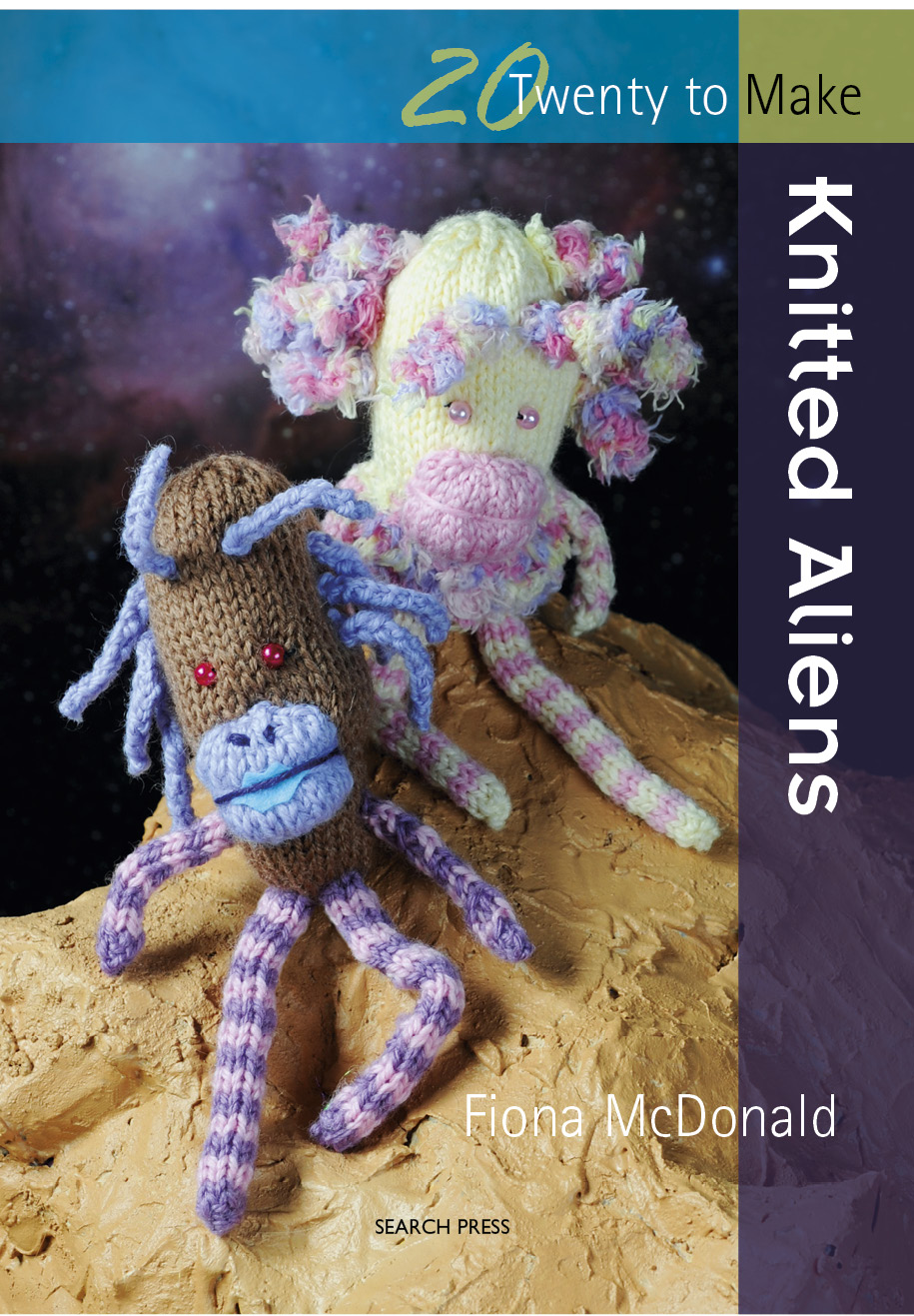
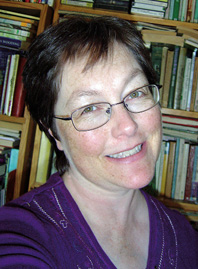
Fiona McDonald studied classical painting and drawing at The Julian Ashton Art School in Sydney, Australia from 1985 to 1989. After moving to the Blue Mountains, she began developing her unique oil-painted, needle-sculpted, life-size cloth figures, and her own line of fabric dolls and dragons. On returning to her home town of Armidale, Fiona added to her skills by learning to knit. This latest phase in her career has resulted in her developing designs for dolls and other toys.
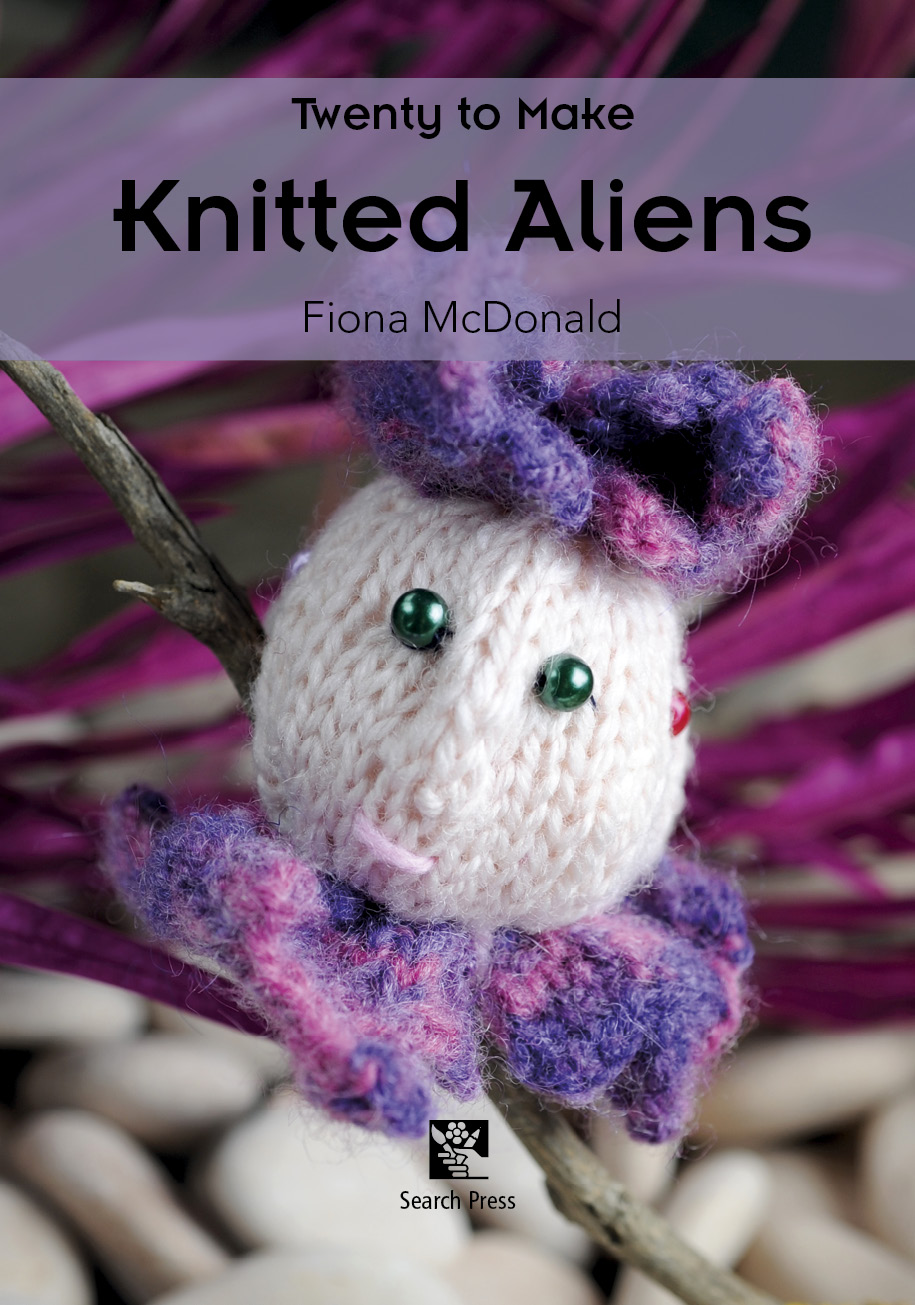
First published in Great Britain 2010 Search Press Limited
Wellwood, North Farm Road,
Tunbridge Wells, Kent TN2 3DR Text copyright Fiona McDonald 2010 Photographs by Debbie Patterson at Search Press Studios Photographs and design copyright Search Press Ltd 2010 All rights reserved. No part of this book, text, photographs or illustrations may be reproduced or transmitted in any form or by any means by print, photoprint, microfilm, microfiche, photocopier, internet or in any way known or as yet unknown, or stored in a retrieval system, without written permission obtained beforehand from Search Press.
Print ISBN: 978-1-84448-536-9 EPUB ISBN: 978-1-78126-023-4 Kindle ISBN: 978-1-78126-078-4 PDF ISBN: 978-1-78126-132-3 The Publishers and author can accept no responsibility for any consequences arising from the information, advice or instructions given in this publication. Readers are permitted to reproduce any of the items in this book for their personal use, or for the purposes of selling for charity, free of charge and without the prior permission of the Publishers. Any use of the items for commercial purposes is not permitted without the prior permission of the Publishers. Suppliers If you have difficulty in obtaining any of the materials and equipment mentioned in this book, then please visit the Search Press website for details of suppliers:
www.searchpress.com
| Dedication To my son Gabriel, who knows everything about aliens |
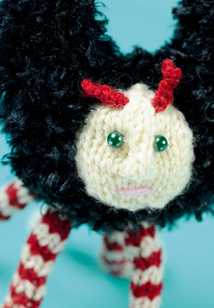
| Abbreviations beg: beginning dec: decrease (by working two stitches together) g st: garter stitch (knit every row) inc: increase (by working into the front and back of the stitch) k: knit k2tog: knit two stitches together p: purl p2tog: purl two stitches together rib: ribbing (one stitch knit, one stitch purl) st(s): stitch(es) st st: stocking stitch (one row knit, one row purl) |

Contents
Introduction They have landed and we have made contact at last! Alien lifeforms from distant planets have come to Earth to make new friends and learn about humans. In this book you will find examples of the inhabitants of many different planets and how to make them. There is also a variation for each one just as on Earth, where we have different types of a single species, so it is on most other planets.
The life forms offered here are but a few of the myriad living organisms found throughout the universe and I am sure it is possible to find many more. In your quest to depict our visitors do not hesitate to experiment with different colours and textures of yarn. You may like to add beads, sequins and other glittery stuff or swap around different body parts to get even stranger and more beautiful aliens. Your imagination can have full rein. Above all else, I hope you enjoy making these miniature beings. Now, lets explore the galaxy! 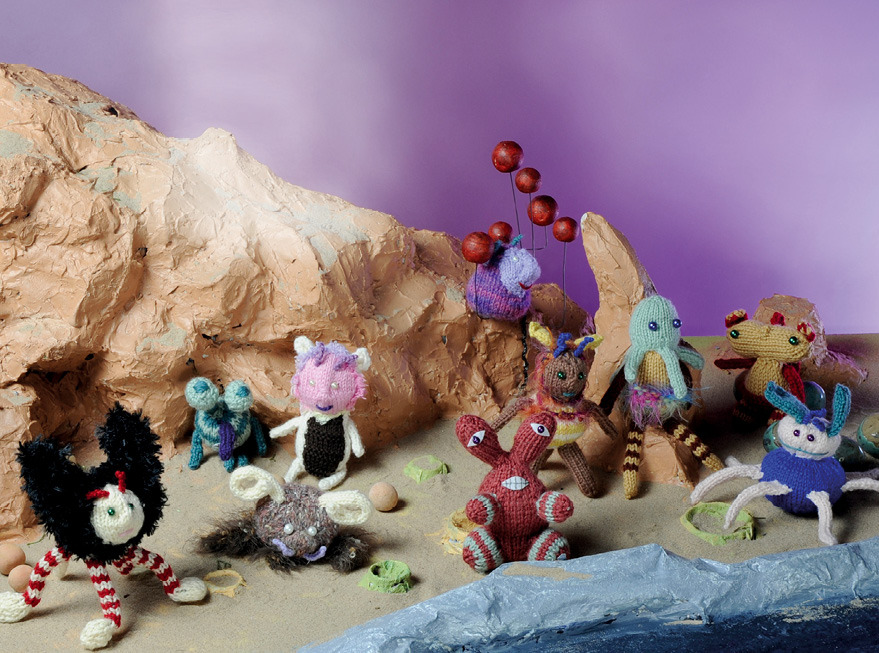
Materials and techniques

Materials For most of the aliens in this book I have used an 8-ply pure wool called Cleckheaton Country.
I have also gathered inexpensive fancy yarns over time and raided my store of these to help the creatures look cute and interesting. If you cannot find the exact same yarn do not be afraid to substitute something else; these are not garments that need precise tension. I use 3mm needles (UK 11; US 2) for nearly all the work in 8-ply. This is because toys are better with a tighter fabric. However, if you have difficulty managing on these needles, try a larger size. Many of these aliens are stuffed with polyester fibrefill.
This is available as toy stuffing but I use inexpensive pillows. An old slim paintbrush is fantastically useful for getting the stuffing into small places: the bristles help hold the stuffing while it is being positioned. A chopstick is a cheap and useful alternative. Techniques You will need a tapestry needle for sewing up seams and an ordinary needle and thread for sewing on bead eyes. I usually sew larger pieces of knitting (such as the main bodies) with the right sides of the seam together, but for small pieces, like arms and legs, I do mattress stitch with the right sides out as it is difficult to turn small pieces right side out once they are sewn up. Safety I have not designed these toys for children under three years of age as they have small parts that could be a choking hazard.
You can adapt any of the patterns by leaving off small parts like antennae and embroidering the eyes instead of using beads. Make sure you stitch arms and legs on very firmly. 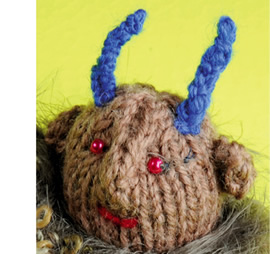 Antennae and tentacles Antennae: With a 3mm crochet hook, crochet 7 chain stitch and cut a long thread. Thread this on to a tapestry needle and weave back through crocheted chain and insert into head of alien, secure with a couple of stitches, neaten thread and clip. You can get exactly the same effect as a crocheted chain by casting on 1 stitch and knitting it, turning it and knitting it again. It is knitting a row of 1 until you reach the desired length.
Antennae and tentacles Antennae: With a 3mm crochet hook, crochet 7 chain stitch and cut a long thread. Thread this on to a tapestry needle and weave back through crocheted chain and insert into head of alien, secure with a couple of stitches, neaten thread and clip. You can get exactly the same effect as a crocheted chain by casting on 1 stitch and knitting it, turning it and knitting it again. It is knitting a row of 1 until you reach the desired length.
For 7 chain stitch of crochet, knit 7 rows of 1 stitch. 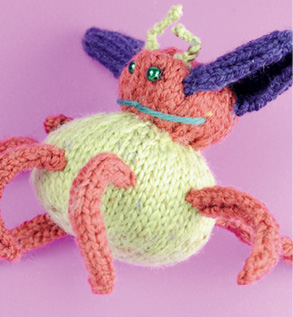 Tentacles: On 3 mm knitting needles cast on and k1; inc into this [2 sts], then work in stocking stitch until the work reaches the desired length and p2tog. Cast off. Thread the tail of yarn on to a tapestry needle and weave it back through tentacle. This gives it a bit more body. You can shape the tentacle into a curve by pulling slightly on it.
Tentacles: On 3 mm knitting needles cast on and k1; inc into this [2 sts], then work in stocking stitch until the work reaches the desired length and p2tog. Cast off. Thread the tail of yarn on to a tapestry needle and weave it back through tentacle. This gives it a bit more body. You can shape the tentacle into a curve by pulling slightly on it.
If enough thread is left over, you can use it to secure the tentacle to your alien.
Fragmolite Materials: 3 balls 8-ply 1 turquoise, 1 yellow and 1 brown Small amount of multicoloured fluffy yarn 2 beads for eyes Polyester fibrefill Tapestry needle Sewing needle and thread Needles: 1 pair 3mm (UK 11; US 2) knitting needles
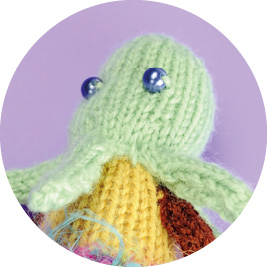
Instructions: Body (make 1) Cast on 20 sts in turquoise. Rows 15: st st. Rows 610: Change to fluffy yarn. Continue in g st. Rows 1118: Change back to 8-ply yarn.

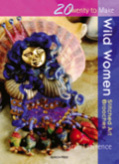
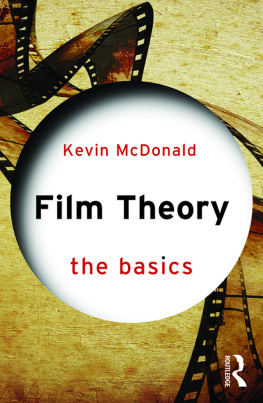

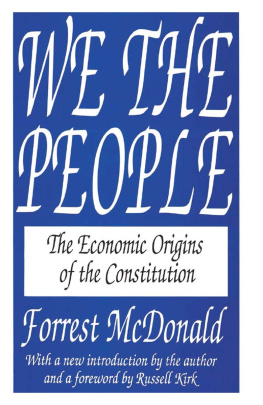

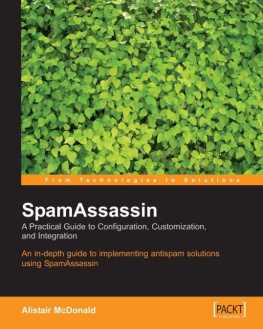
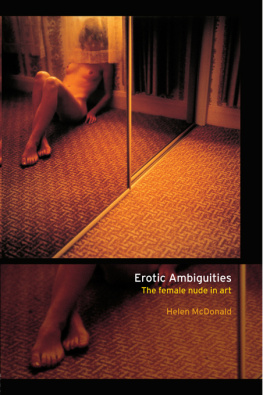

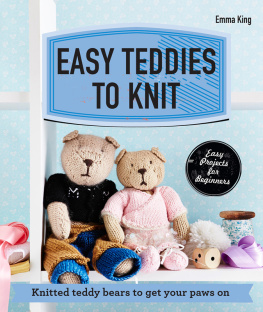

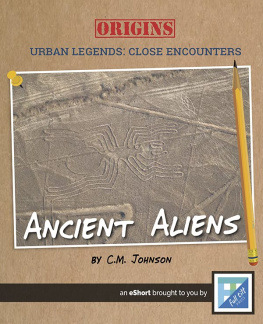
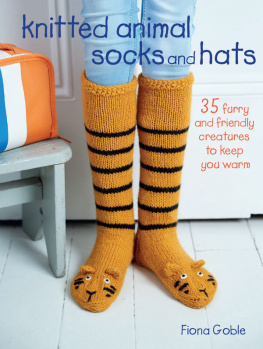
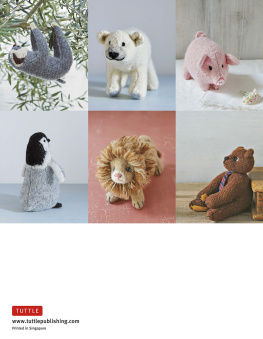
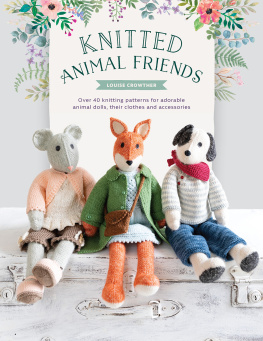
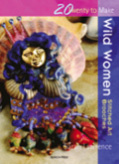
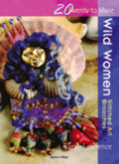



 Fiona McDonald studied classical painting and drawing at The Julian Ashton Art School in Sydney, Australia from 1985 to 1989. After moving to the Blue Mountains, she began developing her unique oil-painted, needle-sculpted, life-size cloth figures, and her own line of fabric dolls and dragons. On returning to her home town of Armidale, Fiona added to her skills by learning to knit. This latest phase in her career has resulted in her developing designs for dolls and other toys.
Fiona McDonald studied classical painting and drawing at The Julian Ashton Art School in Sydney, Australia from 1985 to 1989. After moving to the Blue Mountains, she began developing her unique oil-painted, needle-sculpted, life-size cloth figures, and her own line of fabric dolls and dragons. On returning to her home town of Armidale, Fiona added to her skills by learning to knit. This latest phase in her career has resulted in her developing designs for dolls and other toys.  First published in Great Britain 2010 Search Press Limited
First published in Great Britain 2010 Search Press Limited
 Contents
Contents 
 Materials For most of the aliens in this book I have used an 8-ply pure wool called Cleckheaton Country.
Materials For most of the aliens in this book I have used an 8-ply pure wool called Cleckheaton Country.  Antennae and tentacles Antennae: With a 3mm crochet hook, crochet 7 chain stitch and cut a long thread. Thread this on to a tapestry needle and weave back through crocheted chain and insert into head of alien, secure with a couple of stitches, neaten thread and clip. You can get exactly the same effect as a crocheted chain by casting on 1 stitch and knitting it, turning it and knitting it again. It is knitting a row of 1 until you reach the desired length.
Antennae and tentacles Antennae: With a 3mm crochet hook, crochet 7 chain stitch and cut a long thread. Thread this on to a tapestry needle and weave back through crocheted chain and insert into head of alien, secure with a couple of stitches, neaten thread and clip. You can get exactly the same effect as a crocheted chain by casting on 1 stitch and knitting it, turning it and knitting it again. It is knitting a row of 1 until you reach the desired length. Tentacles: On 3 mm knitting needles cast on and k1; inc into this [2 sts], then work in stocking stitch until the work reaches the desired length and p2tog. Cast off. Thread the tail of yarn on to a tapestry needle and weave it back through tentacle. This gives it a bit more body. You can shape the tentacle into a curve by pulling slightly on it.
Tentacles: On 3 mm knitting needles cast on and k1; inc into this [2 sts], then work in stocking stitch until the work reaches the desired length and p2tog. Cast off. Thread the tail of yarn on to a tapestry needle and weave it back through tentacle. This gives it a bit more body. You can shape the tentacle into a curve by pulling slightly on it. Instructions: Body (make 1) Cast on 20 sts in turquoise. Rows 15: st st. Rows 610: Change to fluffy yarn. Continue in g st. Rows 1118: Change back to 8-ply yarn.
Instructions: Body (make 1) Cast on 20 sts in turquoise. Rows 15: st st. Rows 610: Change to fluffy yarn. Continue in g st. Rows 1118: Change back to 8-ply yarn.